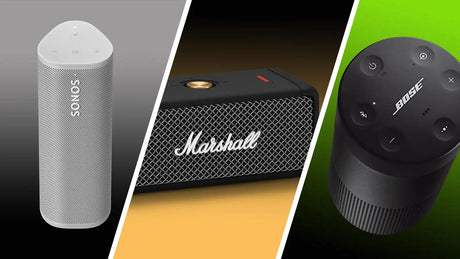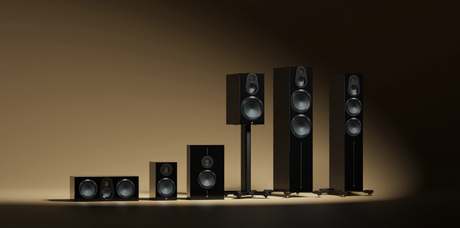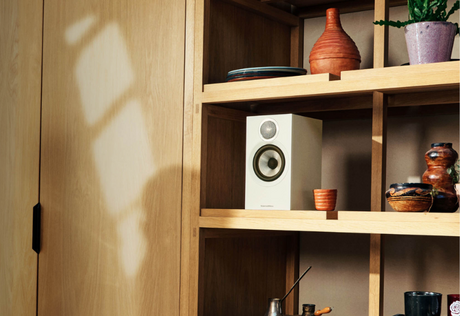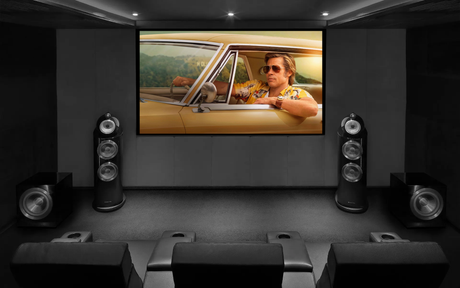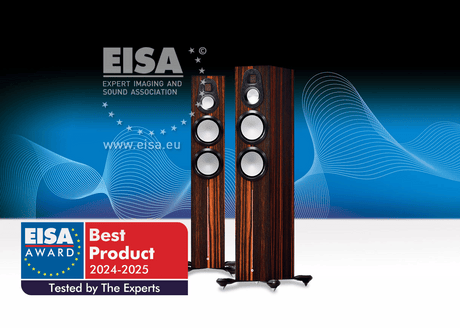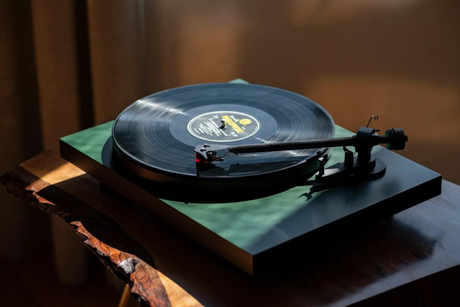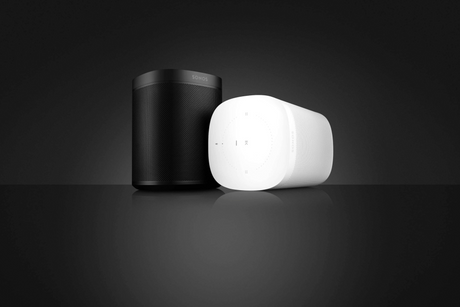Proper maintenance of your PA speakers not only ensures impeccable sound quality, but also extends their lifespan. Here are the basic maintenance steps you should follow:
- Dusting: Clean the speakers regularly with a microfiber cloth, avoid using liquids.
- Check cables and connections: Check for damage, corrosion or oxidation. Replace cables if defective.
- Proper storage: Store the equipment in dry, ventilated areas, avoiding moisture and direct sunlight.
- Regular checks: Monitor the sound quality, looking for distortion, noise, or other interference.
These steps will help protect your system from failures and ensure its smooth operation. If you encounter problems that you cannot solve on your own, it is worth contacting specialists.
1. Cleaning speakers from dust and dirt
Dust and dirt not only degrade sound quality, but can also damage PA system components. When a layer of dust builds up on the diffusers, it changes their weight and vibration characteristics, making the sound sound unnatural and distorted . Worse still, if dust gets into the ventilation holes, it can cause overheating and even serious damage.
1.1 Cleaning tools required
To properly clean your speakers, it's important to have the right tools. Here's what you should have:
- Microfiber cloths that do not leave lint.
- Compressed air canister for dust removal.
- Soft bristle brushes for cleaning diffusers.
- Vacuum pump nozzles with soft bristles for ventilation holes.
Avoid using liquids! AUTOGARSAS.LT specialists remind you that water, alcohol, or any other liquids can penetrate internal components and damage electronic elements.
1.2 Proper cleaning process
Before cleaning, turn off the equipment, disconnect the cables, and wait at least 15 minutes for the equipment to cool down. Hot components are particularly sensitive and can be easily damaged.
- Start from the outside: Gently wipe the case with a microfiber cloth, using circular motions.
- Cleaning the diffusers: Use a soft brush, cleaning from the center outwards. It is important not to press on the diffuser - even the slightest pressure can deform it.
- Ventilation openings: Keep the can of compressed air at least 20 cm away from the openings. This will prevent excessive pressure, which could push dust deeper inside.
1.3 Common cleaning mistakes
One of the main mistakes is using liquids. Even a small amount of moisture can damage the sensitive elements of the speaker.
Another common mistake is rushing . Trying to remove all the dust in one go often causes scratches or even damage. It is better to clean gently and repeatedly than vigorously and quickly.
Regular cleaning, at least once a month, will help your PA system run reliably and for a long time. Don't forget to also clean the back of the speaker and the connectors - this will help prevent overheating and ensure smooth operation.
2. Cable and connector inspection and maintenance
After you’ve taken care of cleaning your speakers, it’s important to pay attention to their cables and connectors. These elements are responsible for transmitting the audio signal, and any damage to them can cause noise or even stop the sound altogether. Even minor defects can have a big impact, so regular maintenance is essential if you want to ensure the smooth operation of your system.
2.1 How to recognize violations
To maintain stable sound transmission, it is recommended to regularly check the condition of the cables. Carefully inspect the insulating sheath - cracks, scratches or deformations may indicate damage to the internal wires. Pay special attention to the areas near the connectors, as frequent bending in these areas often causes mechanical damage. Also check the contacts of the connectors - corrosion or oxidation, especially if the environment is humid, can disrupt the signal.
If you notice crackling, sound distortion or other disturbances, this may be a sign that the cables are damaged. In this case, they must be checked immediately and replaced if necessary.
2.2 What tools to use for inspection
To pinpoint the damage, use a cable tester or digital multimeter. These tools can help detect broken wires or shorts. Also, good lighting and a magnifying glass will be helpful in finding small damage that may be difficult to see with the naked eye.
2.3 When to replace or upgrade cables
Cables should be replaced if you notice cracks in the sheath, broken connectors, or signs of corrosion. If the sound transmission is distorted or you notice other disturbances, this may also be a sign that the cabling system is no longer up to standard and needs to be upgraded. In the next section, we will discuss how to properly store and position your speakers to avoid such problems in the future.
3. Proper speaker placement and placement
Storing and positioning speakers properly is not only essential for preserving the equipment, but also for ensuring the best sound quality. Improper storage conditions can damage the equipment, and incorrect positioning during use can lead to both poor sound quality and a shorter lifespan. This is especially important for PA systems that are frequently used in various environments and are frequently transported.
3.1 Optimal storage conditions
The storage conditions of the speakers must be carefully controlled. Store them in rooms where the temperature varies between 15-25°C and the humidity level does not exceed 60%. Too much humidity can cause corrosion of metal parts, and too little can cause brittleness of plastic parts.
It is important to avoid direct sunlight, as UV rays can damage plastic housings and cause deformation. The storage location should also be protected from temperature fluctuations - unheated warehouses or garages are not suitable in winter. Also, ensure good ventilation - use moisture absorbers in closed rooms or ensure minimal air movement.
3.2 Proper positioning during use
The placement of speakers during use directly affects not only the sound quality, but also the durability of the equipment. To reduce the effects of vibrations, speakers should be firmly attached to stable surfaces or used with special stands that help reduce resonance.
Air circulation around your speakers is essential, especially if you are using powered speakers with amplifiers. Leave at least 10 cm of space around the ventilation holes to prevent overheating. Overheated components can not only perform poorly, but can also fail.
The orientation of the speakers also plays a role – they should be pointed directly at the listeners, but not too close to walls or corners, where unwanted sound reflections can occur. If you are using multiple speakers, their placement should be symmetrical to distribute the sound evenly.
3.3 Protective cases and covers
Speaker protection is essential during transportation. Special transport cases protect the equipment from shocks, moisture and dust. For example, AUTOGARSAS.LT offers various sizes and types of protective solutions adapted to different speakers.
Use breathable covers to protect your equipment from dust and UV rays. Plastic covers can cause condensation, so choose textile options. If your equipment is frequently transported, consider a flight case with foam inserts – they not only protect against shocks, but also from temperature changes and humidity.
These measures help maintain the longevity of PA systems and ensure that the equipment is ready for regular use without additional hassle.
4. Regular system checks
After implementing the cleaning and cable maintenance recommendations, it is essential to regularly check the operation of the entire PA system. This helps prevent unexpected failures and ensure quality sound every time.
Regular inspections are one of the most important steps to not only maintain the value of your system, but also to ensure that it will function reliably when you need it most. Even minor problems, if not noticed in time, can develop into more serious failures.
The frequency of inspections depends on the intensity of use of the equipment:
- For frequently used equipment , weekly inspections are recommended.
- For rarely used equipment – at least once a month.
During each inspection, attention should be paid to the sound quality, the condition of the connections, and the overall performance of the system.
4.1 Common audio issues worth noting
Early detection of problems can help avoid costly repairs. Here are some key signs to look out for:
- Distortion : If the sound sounds unnatural, especially in the high or low frequency range, it may indicate damage to the speaker membrane or problems with the amplifier.
- Volume Inconsistencies : Different volume levels between speakers can indicate connection problems or worn components. This is often related to improper storage or transportation of cables.
- Loss of sound clarity : A "foggy" or "muffled" sound can be caused by dust in the speaker cone or faulty crossover components, especially in environments with a lot of dust or smoke.
- Noises and humming : A constant background hum, hissing, or other noises can be a sign of cable shielding problems or electromagnetic interference.
- Audio interruptions or sudden changes in volume : These symptoms usually indicate unstable connections or power supply problems.
When you notice these signs, it is important to take action as soon as possible to prevent the problem from spreading.
4.2 When to contact specialists
When problems already have a clear impact on sound quality and cannot be eliminated with conventional maintenance methods, it is worth contacting professionals. AUTOGARSAS.LT specialists recommend not to delay if:
- Electrical components fail : If the speakers stop working completely, there is a burning smell, or physical damage is noticeable, immediately stop using the equipment and contact a professional.
- Problems involve multiple components : If faults affect several parts of the system at once, a comprehensive diagnosis is required. AUTOGARSAS.LT offers a complete system analysis that helps identify the source of the problems and prevent their recurrence.
Professionals use specialized equipment that allows them to accurately assess the performance of speakers and detect even the smallest deviations. For systems that are used intensively, it is recommended to carry out preventive inspections at least once a year.
If problems persist despite proper maintenance, it may indicate compatibility issues or improper system configuration. In such cases, AUTOGARSAS.LT specialists can help not only eliminate existing problems, but also offer solutions that will improve the overall performance of the system. Their advice will ensure that your equipment runs smoothly and for a long time.
sbb-itb-02aace5
Conclusions: Basic Principles of PA System Speaker Maintenance
Proper maintenance of your PA system is essential to ensure its long-term performance and impeccable sound quality. By following a few important principles, you can keep your system in great condition for years to come.
- Regular cleaning : Dust and dirt can not only reduce sound quality but also damage the equipment. Regular cleaning of your speakers will ensure that they operate smoothly and produce clear sound.
- Check cables and connections : A faulty cable or improper connection can cause signal interference. Check that all cables are in good condition and properly connected to avoid unwanted malfunctions.
- Proper storage and positioning : Protecting speakers from moisture, dust, and mechanical damage is essential. In addition, properly positioned speakers ensure even sound distribution.
- Regular technical inspections : Periodically inspect the system to detect possible defects or wear and tear in time. Early detection of faults helps prevent major problems in the future.
These simple but important steps can significantly extend the life of your PA system. If you are looking for professional help, AUTOGARSAS.LT offers not only high-quality PA systems, but also specialist services in Kaunas. They will make sure that your system works flawlessly and provides the highest quality sound for many years.
FAQs
How often do you need to clean your PA system speakers to keep them working optimally?
How to maintain PA system speakers?
It is recommended that PA system speakers be cleaned every 3-6 months. However, if the equipment is used in a dusty or humid environment, cleaning may be required more frequently.
Why is this important? Regular maintenance not only ensures clean sound, but also helps extend the life of your speakers. Also, don’t forget to inspect your cables to make sure they are properly connected and not damaged or frayed. A well-maintained system will perform more reliably and last longer.
How do you recognize that the speaker cables or connectors of a PA system are damaged?
Signs of damaged cables or connectors
If you notice that your sound system is not working as it should, it could be a sign that the cables or connectors are damaged. Here are some possible signs:
- The sound cuts out or is intermittent.
- Noise or unusual sounds occur that interfere with enjoying quality sound.
- The sound quality deteriorates , becomes uneven or weaker.
- Physical damage : frayed, cracked, or pinched cables and connectors.
To avoid major problems, it is important to regularly check cables and connectors. If you notice any of these signs, it is recommended to contact specialists without delay. For example, AUTOGARSAS.LT can offer not only professional assistance, but also high-quality audio solutions that will meet your needs.
How to properly store and transport PA system speakers to protect them from damage?
How to protect PA system speakers?
To avoid damaging your speakers, it is important to follow a few simple but effective rules. Always use special protective cases when transporting them . They will help protect the equipment from bumps, scratches and other possible damage that may occur during travel.
When storing speakers, it is important to keep them upright and avoid overloading them. Improper stacking can cause mechanical damage, which can eventually compromise sound quality or even damage the equipment.
If you are looking for advice or professional solutions on how to maintain and transport your audio equipment, AUTOGARSAS.LT offers assistance. They can help ensure the longevity and best performance of your equipment.


